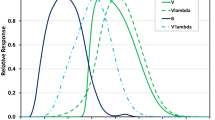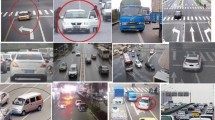Abstract
The application of new technology to vertical traffic panel is continuously increasing. The actual technology has not resolved some vision problems in road traffic when sun glares drivers; this is especially significant in vertical panels and also in tunnel entrances. Natural light guided with this new optical device is enough to make a panel visible in the worst condition. A luminance value of 800 cd/m2 is obtained at a solar elevation of 30° on driver eye at 25 m distance this assure legibility of the legend in the worst condition. There are several situations where the correct use of sunlight can be an advanced tool. For example, tunnel entrance during day is always a risky zone due to the adaptation of eye to different luminances. Other case is displays with east or west orientations which are signalling exit in highways. The third example is dangerous curves in mountain roads where the sun glare can make the driver lost de road vision. We propose an optical device to solve this question with the use of natural light guiding system.
Resumen
La aplicación de las nuevas tecnologías a los paneles luminosos de señalización está aumentando continuamente. La tecnología actual no ha resuelto algunos problemas de visión cuando el sol deslumbra a los conductores; esto afecta especialmente a los paneles luminosos y a los situados a la entrada de los túneles. La luz natural con este nuevo dispositivo óptico la luz natural es suficiente para que un panel luminoso sea visible incluso en las condiciones más adversas. Un valor de luminosidad de 800 cd/m2 se obtiene con una elevación solar de 30°; el ojo del conductor en condiciones adversas asegura la legibilidad de las inscripciones a 25 metros de distancia. Existe un buen número de situaciones donde el correcto uso de la luz solar puede ser una herramienta avanzada. Por ejemplo, la entrada a un túnel durante el día es siempre una zona de peligro ya que el ojo debe adaptarse a diferentes grados de luminosidad. Otro caso son las señales situadas hacia el este o el oeste que señalizan las salidas de las carreteras. El tercer ejemplo son las curvas peligrosas en carreteras de montaña, donde el reflejo del sol puede hacer que el conductor pierda de vista la carretera. Proponemos la utilización de un dispositivo óptico para resolver los problemas derivados del uso de sistemas de señalización con luz natural.












Similar content being viewed by others
References
Borenstein, A. (1990). Traffic signal using light-emitting diodes. United States Patent, 4954822.
Brooke, R., et al (2005). Legibility distances of smaller letters in changeable message signs with light-emitting diodes. Journal of the Transportation Research Board, No. 1918 (pp. 56–62). Washington, DC: Transportation Research Board of the National Academies.
European Standard EN 12966–1 “Road vertical signs”.
Fernandez-Balbuena, A. A., Vázquez, D., García-Botella, A., Martínez-Anton, J. C., & Bernabeu, E. (2011). Smooth light extraction in lighting optical fiber. Marseille: SPIE Optical Systems Design.
Fernandez-Balbuena, A. A., Vazquez-Molin, D., Garcia-Fernandez, B., & y Bernabeu, E. (2010). Antiglare traffic signal by natural lighting. In Colour and light in architecture (pp. 453–458). Italy: University IUAV of Venice. ISBN 978-88-96370-04-9.
Kaufman, J. E. (2000). IES lighting handbook. The standard lighting guide. Illuminating Engineering Society of North America.
Nygardhs, S., Helmers, G. (2007). “VMS A literature review” VTI rapport 570A.
Rojo, J. J. (extended Bernabeu, E; Vázquez, D and Fernandez-Balbuena, A.) Patent entitled (2001). “Array panel for traffic signal”, Spanish patent number ES 2188425, “Panel matricial de señalización vial”.
TracePro® Opto-Mechanical Design Software. http://www.lambdares.com/
Vázquez-Moliní, D., Fernández-Balbuena, A., Bernabéu, E., Martínez, J. C. Patent: “Sistema para la extracción de luz en fibras ópticas monofilares”, n° solicitud: P200701115, ES2338079 y (WO/2008/132257) System for extracting Light from mono-filament optical fibres.
Winston, Miñano, & Benitez. (2005). Nonimaging optics. New York: Elsevier.
Author information
Authors and Affiliations
Corresponding author
Additional information
This work is associated to the program SEGVAUTO P2009/DPI-1509 of Comunidad de Madrid.
Rights and permissions
About this article
Cite this article
Bernabeu, E., Vazquez-Molini, D. & Fernandez-Balbuena, A.A. Improvements in road security with optical systems and natural light. Securitas Vialis 4, 137–142 (2012). https://doi.org/10.1007/s12615-012-9063-y
Published:
Issue Date:
DOI: https://doi.org/10.1007/s12615-012-9063-y




